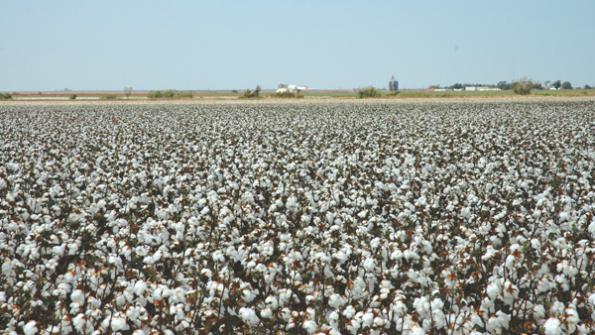
If researchers can determine a way to identify specific areas where specific quality levels show up farmers may be able to adjust management to improve quality.Ongoing research at Texas A&M University seeks to find ways to trace fiber quality back to specific field locations.Fiber quality mapping comes with significant challenges.

Mapping fiber quality within a cotton field poses some unique challenges, but if researchers can determine a way to identify specific areas where specific quality levels show up farmers may be able to adjust management to improve quality.
Ongoing research at Texas A&M University seeks to find ways to trace fiber quality back to specific field locations, said Dr. Alex Thomasson, Department of Biological and Agricultural Engineering.
Most yield mapping studies, Thomasson said, during a precision agriculture session at the recent Texas Plant Protection Association annual conference, focus on yield, even though industry has emphasized the importance of fiber quality.
“Growers have not done so for in-season crop management,” Thomasson said. “The amount of fiber-quality variation observed has been smaller than lint-yield variation (observations).”
Both are part of a “profit mapping” system that “would enable producers to implement precise field management practices to maximize profit on each portion of a field.”
Fiber quality mapping comes with significant challenges, he said. “To map fiber quality, harvest location of cotton bales must be known, so an automated wireless module tracking system was developed.”
The system included wireless transceivers that enable transfer of cotton basket numbers among harvesting machines. Also, the system used automated wireless triggering based on basket weight and basket-tilt sensing. The third part of the system included automated identification of each machine.
“The completed system allowed automated tracking of harvested basket-area position and mapping bale-level fiber quality data to those areas,” Thomasson said. “Further study was conducted to determine relative effects of yield and fiber quality on in-field revenue variation, which was separated into lint yield and fiber quality components.”
Standard deviation of revenue ranged from $73.20 per acre to $87.40 per acre. The fiber quality variation contribution ranged from 13 percent to 31 percent of the total.
“While lint yield was more important, the contribution of fiber quality was substantial and should not be overlooked,” Thomasson said, “especially when high input costs and small profit margins are considered.”
He said measuring fiber quality is difficult, but, as farmers become more interested in “profit mapping,” they may want to incorporate fiber quality mapping into the system. “Profit mapping requires site-specific knowledge of yield and price, which varies (from site to site) because fiber quality varies,” he said.
About the Author(s)
You May Also Like





